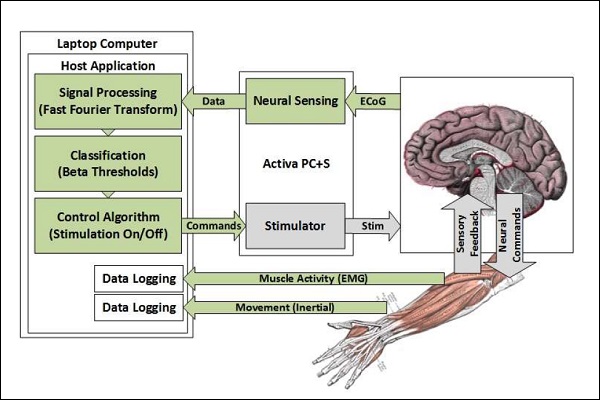
Full Text:
Essential tremor is the world’s most common movement disorder, affecting an estimated 7 million people in the U.S. alone. The hallmark of this disease is an involuntary, rhythmic shaking during intentional movement, complicating everyday tasks like writing, eating and drinking. When resting or sleeping, however, most patients have few or no symptoms.
It can be treated with a surgical procedure called deep brain stimulation by an implanted electrode deep in the brain. In current use, however, these implanted devices are constantly “on.” For the first time, researchers have combined electrodes on top of the brain to sense movement in the parts of the body that experience essential tremor, along with a deep brain electrode, to deliver stimulation only when it’s needed.Image credit: University of Washington